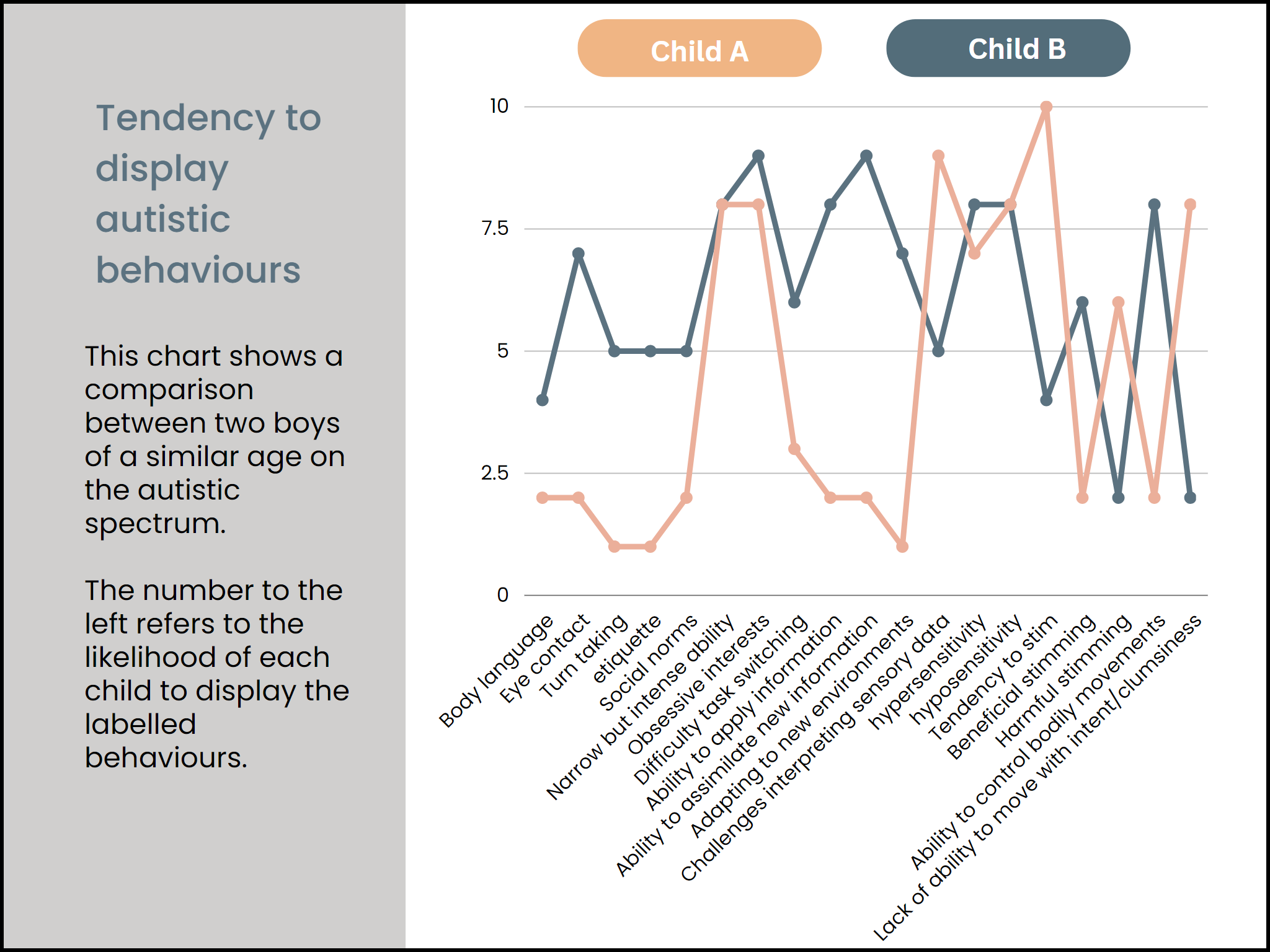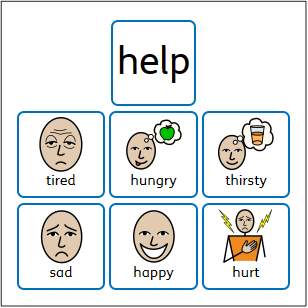What is Autism?
Read more about autism below, and see our fact sheets for more information.
What is Autism?
Autism is a SPECTRUM CONDITION.
Wikipedia defines autism as a “spectrum disorder, as it can manifest differently in each person: any autistic individual is likely to show some, but not all, of the characteristics associated with it, and the person may exhibit them to varying degrees and frequencies.[6] There is large variation in the support needs of autistic people, and some are nonspeaking, while others have proficient spoken language.”. (Autism spectrum – Wikipedia).
What this means is that there is a set of behaviours, differences, and impairments (difficulties) that a person may have, and that when there are enough of them seen in the same person, with at least one from each area of concern, a diagnosis of autism can be given. More than one in 100 people are on the autism spectrum and there are around 700,000 autistic adults and children in the UK. (National Autistic Society, 2022)
There are many common behaviours that an autistic person may display, however these are not the same for every person and not every behaviour must be present for a diagnosis to be made. It is common for an autistic person to show what is known as a ‘spiky skills profile’ where they may have strong skills in one area and weaker skills in another.
The above chart shows the profile of two autistic boys of the same age. They both display the characteristic behaviours associated with autism, but the frequency and intensity of these is clearly different.
Child A is a 13 year autistic boy who uses verbal language and attends a main stream secondary school. Child B is a 12 year old autistic boy who uses non-verbal language (limited signs) and attends a specialist secondary school.
It is possible for a person to display some common behaviours in one or two of the areas of diagnosis, however unless deficits and impairment are shown in all three areas, a diagnosis of autism cannot be given. In this case, an alternative diagnosis may be suggested, such as sensory processing disorder, generalised anxiety disorder or OCD. For a professional to diagnose autism, differences must be noticed in all three areas of impairment.
Autism does not always come with associated learning difficulties or disabilities such as language delay, dyslexia or developmental delay.
Some autistic behaviours can make it difficult for a person to communicate; maybe because they do this in an unusual or non-verbal way or because they may use no language at all. Understanding a person’s autism and working with them can help them to find a method of communication that suits them, enabling them to make choices and take control of their own lives. Alternative forms of communication include PECS, Makaton or their own gestures, echolalia, and communication boards.
There is no cure for autism. It is a lifelong condition that will always be there. However, by working with the person and understanding their needs, as well as helping them to understand the world around them and how to cope with it, an autistic person can live a full and satisfying life.
Some autistic people will have needs that affect their movement. Whether needing to move often in a particular way, such as:
- Rocking
- Spinning
- Hand flicking or flapping (stimming)
- Toe walking, or needing assistance because of low muscle tone.
These aspects of a person’s life are unique to them and should not be ‘removed’ or dismissed as unimportant.
Autistic people may find it hard to accept change in their environment and may need to control their routine, food intake, environment, clothing, and timetable. These are manageable changes that can be made to help an autistic person manage their day.
It is essential to remember that the range of behaviours displayed by each person is as unique as their fingerprints and while there may be an overall pattern that allows a diagnosis, the severity of each behaviour or impairment and the way it affects each person is individual to them.
Additionally important is that autism is NOT caused by parental failure or influence, vaccinations, or illness. It is a neurodevelopmental disorder – that is, a condition that affects how the brain functions.
Put simply, an autistic person’s brain works in a different way to a person who is not autistic.


